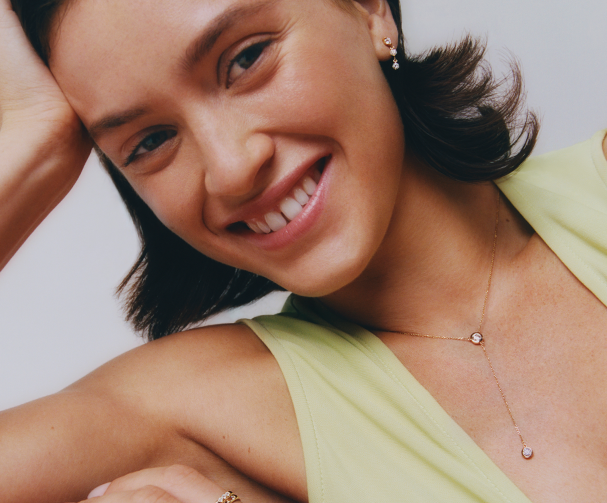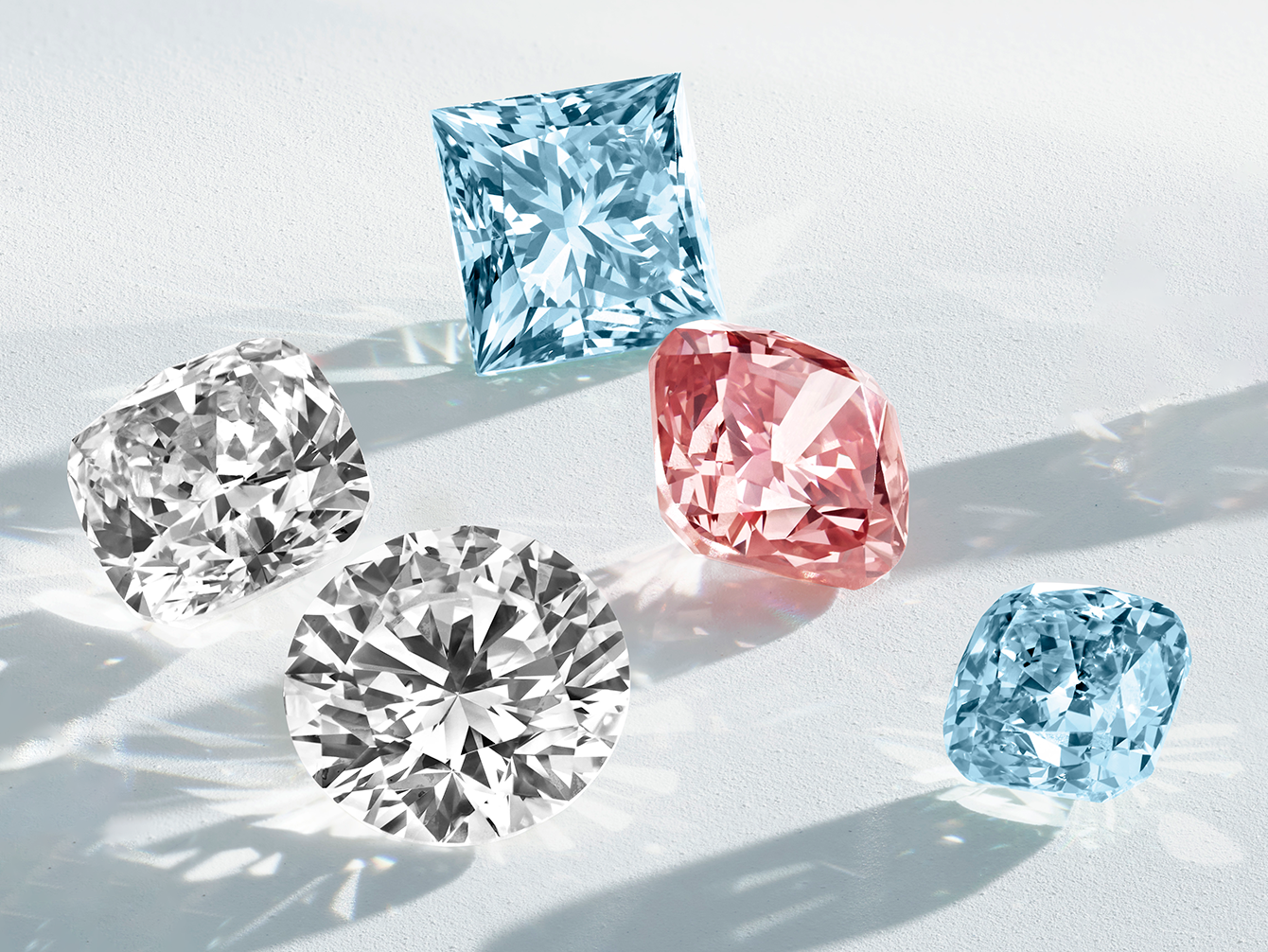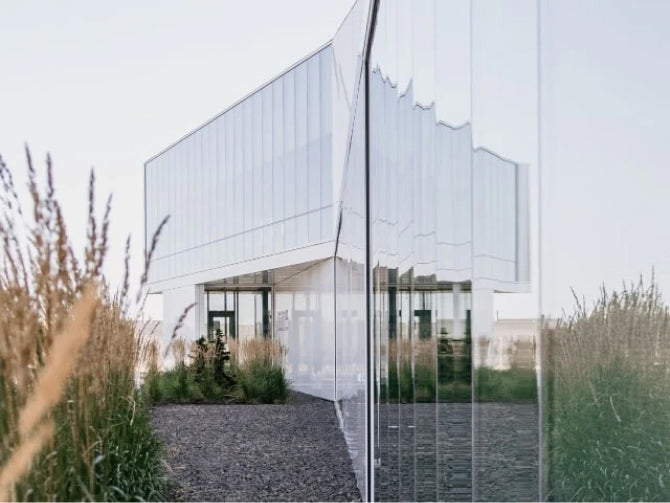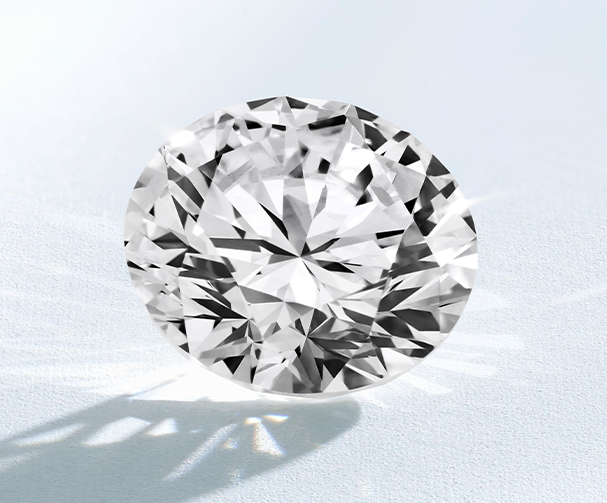We interviewed Sally Morrison, doyenne of jewelry and our fearless team leader here in the world of Lightbox digital. We wanted you to get to know her point of view on what all the fuss is about laboratory-grown diamonds and how they fit into the wider world of jewelry, and really, a woman’s life. We love that her first exposure to jewelry and her path to becoming a jewelry collector, while singular (hello, Elizabeth Taylor!), mirrors that of so many women. We receive a gift when we are young and gradually grow to appreciate the beauty and symbolism of jewelry until the collectors among us keep searching for just. One. More. Piece.
That is what we are most proud of at Lightbox – that we can offer you jewelry lovers out there covetable lab-grown diamond jewelry at an all-too-tempting price. Because we are about more jewelry for more moments, and we want as many people who love to sparkle as possible to participate in the fun.
Here’s to lighting up your jewelry box with another piece – Lightbox Editorial Team
What was the first piece of jewelry you owned or wore?
I had a tiny silver bracelet when I was a baby – I think it was actually a christening gift – and I wore it until it was so painful to squeeze on and off I just had to put it aside. But I still have it, and it’s definitely part of my own jewelry history.
Did you ever think you would be promoting laboratory-grown diamonds?
Not at all. Having seen all kinds of incredible diamonds, having read about the history, and frankly having had the incredible opportunity of going to Southern Africa and really seeing how diamonds positively benefit communities, I just wasn’t that interested in lab-grown. But I always thought they would find their own place in the market, and that they would not be a substitute for natural diamonds but be their own thing. And to come full circle, I think that’s where we are now. Lab-grown diamonds are here, but they offer a real opportunity for people to own something with scintillation and color, at a reasonable price. It’s a whole new market.
Did you love jewelry before you worked with Elizabeth Taylor?
I would say I liked it, but didn’t love it. The great thing about Elizabeth was that she was very, very, democratic and if you worked for her, you were part of her extended family. And so that meant, she would share her toys. And to be clear, her jewelry pieces were toys; things to be taken out, tried on, played with. So even though many of her pieces were incredibly precious—actual museum quality pieces—I was able to touch them and try them on and so on. That’s an amazing thing for a young (impressionable) person: to see the Taj Mahal diamond but not in a glass case, to try on the Krupp diamond, and to listen to her talking about the way pieces were made… I mean this was someone who could chat for an hour about the Van Cleef invisible setting! So of course it shaped me, because I got an education from a very committed and charismatic collector. In that sense, she was great teacher.
What was it like to hold some of the most extraordinary jewels in the world in your own hands?
I should say it was super exciting, but in a real way, Elizabeth also “normalized” it. She knew her collection was important, but above all it was something to be worn, to be enjoyed, and to be shared. Her collection was not for the safe, and not particularly for posterity. It was for her personal pleasure and it was for now. And she wore everything. From time to time she wore costume jewelry from the street in New York, and often mixed it in with seriously important things. But that was her: she was the queen of high/low.
What did she teach you about collecting jewelry?
I think the main lesson was “every collection starts somewhere”. My very first trip with her was for an AIDS benefit in Bangkok, and she was very excited to see the jewelry stores once we had finished work. And she told me I should absolutely buy something as a memento of the trip. I thought she was crazy—I was in my twenties and really didn’t have a lot of money. But she was very clear “buy something modest, that you can afford and you’ll have that memory forever”. So I did. Two very small blue sapphires. But it was my first personal jewelry purchase, and with hindsight, yes, it was the beginning of my own collection. She definitely is responsible for starting something.
How did you start working in the jewelry industry?
I was working in film publicity, at what was then Miramax Films. I had a very young son, and I was on the road all the time. And it was hard. And I heard that JWT was looking for someone to work on 'A Diamond is Forever’. And it sounded exciting and different, so I applied!
How would you describe how the world and people have changed in ways that make laboratory-grown diamonds right for this moment?
I think the world for women is changing even as we speak. We have known for a while that self-purchase was on the rise, but I don’t think we even know yet how the “me too” movement and all the events of the last year will ultimately impact consumer markets. In the short-term, laboratory-grown diamonds make women buying for themselves easier, both because of the accessible prices but also because this is a product that doesn’t carry the same deep emotional signifiers that natural diamonds do. So it’s liberating: a woman can purchase a good looking piece for herself now.
Why is the Lightbox concept important?
Lightbox is a brand that wants to be transparent: at every level. There has been a lot of talk about our pricing, which is based on cost of production. But we want also to be transparent in that – literally – you get what you see. So the packaging has a clear window, and you immediately see into the box and know what it is. And the stones above 20pts are inscribed with our logo, via special laser technology developed by the University of Oxford, so it’s clear this is lab-grown material. Ultimately, we are a brand that is friendly and approachable and not rarefied, and we are inviting people to have fun with us.
What do you hope Lightbox jewelry will bring to jewelry lovers?
I think it’s just the opportunity to have beautiful, new kinds of jewelry at reasonable price points. It’s about the continued democratization of the category. If we can have beautifully designed kettles by Philippe Starck at Target, why can’t we have fantastic jewelry at lower prices for more people. Rare things are expensive, of course, but pretty, well-made things should not have to be. For most of us, the idea of a pink or blue diamond is crazy - a miracle of nature we may never even get to see, much less dream of owning. But now, thanks to technology, we can own a Lightbox pink or blue.
What moments in your own life could you envision buying or gifting a piece of Lightbox jewelry?
I have a niece who is about due for an 18th birthday gift. I think she would love a pink princess cut solitaire necklace.
What is the very first piece of Lightbox jewelry you plan to own?
Studs. As someone who drooled over the Shirley Temple Blue Diamond at Sotheby’s, my first purchase has to be blue.
Sally's Top Picks



